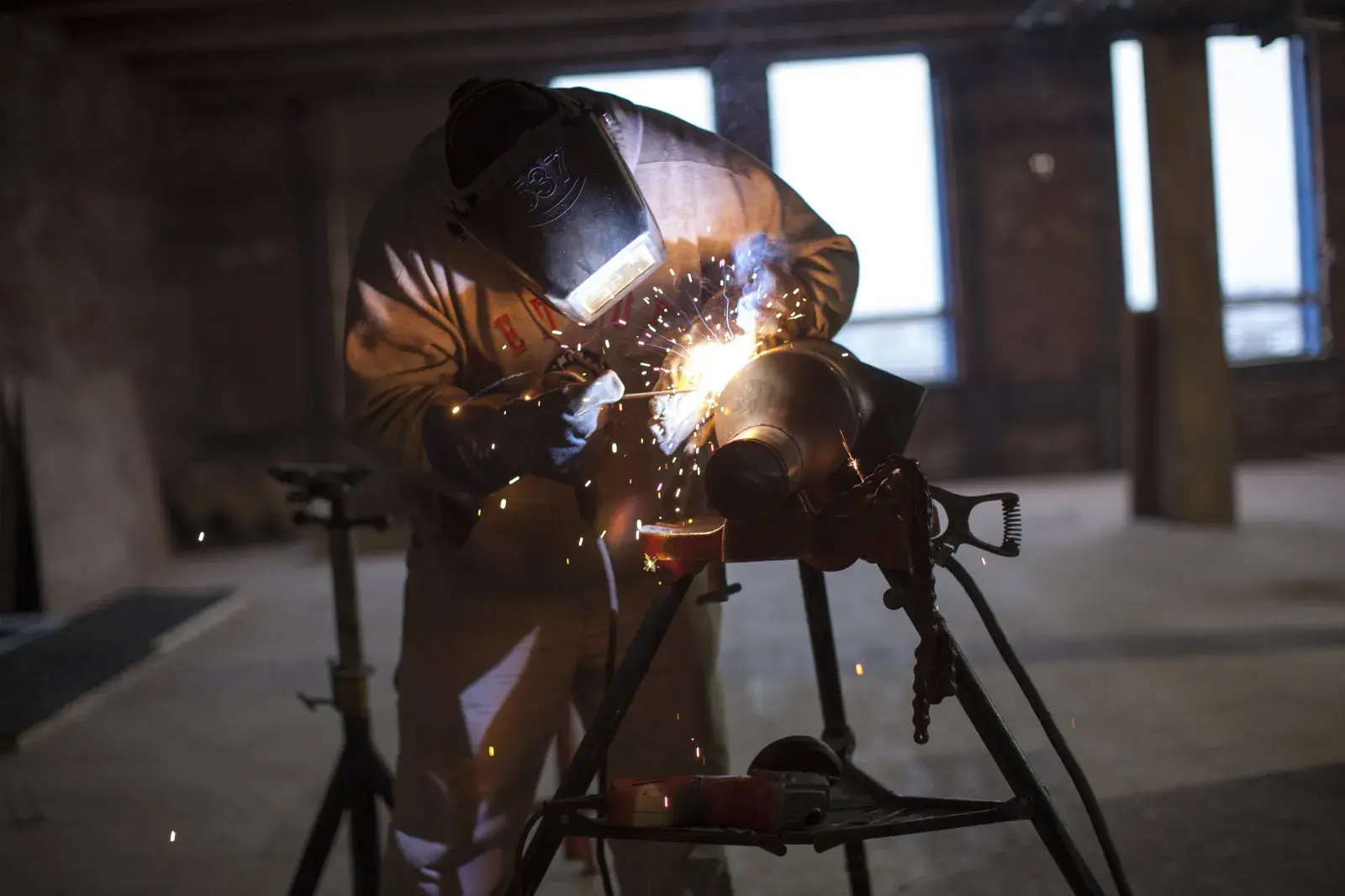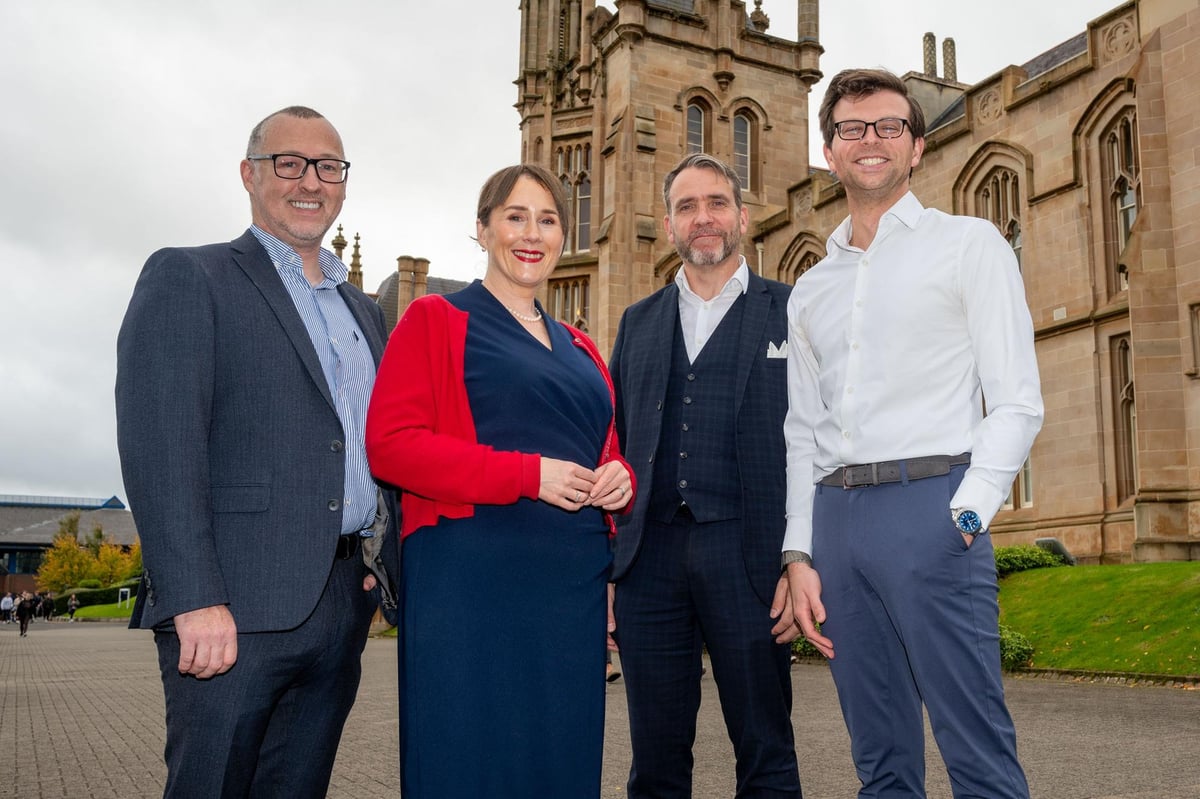By Mark Rayfield
Copyright newsweek

Manufacturing has always been the backbone of the U.S. economy, creating jobs, fueling innovation, and providing livelihoods and careers for millions of families. Today, nearly 13 million Americans work in manufacturing, but the sector faces a critical challenge that threatens its future: a widening talent gap.
The numbers are stark. According to a study by Deloitte and The Manufacturing Institute, the U.S. will need to fill 3.8 million manufacturing jobs over the next decade. Yet, half—1.9 million roles—could go unfulfilled due to a persistent shortage of skilled workers. In July alone, manufacturing job openings jumped to 10 percent reaching 473,000. This isn’t just a labor issue; it’s a national competitiveness issue.
A welder works on a pipe fitting at the Fraunhofer Building Technology Showcase October 2, 2012 under construction in the Innovation District of Boston, Massachusetts. (Photo by Robert Nickelsberg/Getty Images)
One of the most urgent drivers of this gap is generational. The manufacturing workforce is aging. Over the past two decades, the proportion of employees aged 55 and older has more than doubled. As seasoned workers retire, the next generation is not stepping in fast enough to replace them.
Why? For years, students have been steered toward four-year degrees, while trade careers, especially in manufacturing, have been overlooked or stigmatized. Outdated perceptions persist, and many view manufacturing as dirty, dangerous, and limiting career growth. These stereotypes couldn’t be further from the truth.
Modern manufacturing is highly technical, clean, and safe, with modern facilities powered by robotics, artificial intelligence (AI), and standard sustainability practices. These are not just jobs; they are careers in an innovation-driven field. In 2023, the average manufacturing salary was $102,629, and the sector consistently ranks among the highest for employer-provided health care.
What we face is not just a pipeline problem, it’s a visibility problem. Of the current number of students enrolled in career and technical (CTE) classes, almost 90 percent of students have never visited a manufacturing site, and we cannot expect students to choose a path that they cannot see. To energize future generations around the opportunity in their backyards, the industry must make a concerted effort to build pathways from the classroom to the factory.
Some industry leaders are already demonstrating how we can build a stronger pipeline by directly engaging the next generation. At Saint-Gobain North America, we launched Sustaining Futures, Raising Communities, a long-term program that brings modern manufacturing into the classroom and the classroom to the site floor. Across the country, we have already partnered with schools in North Carolina and Minnesota, and we will partner with over 10 additional high schools in Louisiana, Massachusetts, Texas, Pennsylvania, Missouri, and Arkansas during the 2025-2026 school year.
We are not alone in this effort. In addition to individual programs from our peers, the Federation for Advanced Manufacturing Education (FAME USA) runs a national apprenticeship program that combines classroom study with on-the-job training. Meanwhile, The Manufacturing Institute’s Creators Wanted campaign is helping students and parents discover the opportunities available in today’s manufacturing sector.
Still, to address a whole-of-industry problem, we need a whole-of-industry effort. October is National Manufacturing Month, making it a perfect time for the industry to reach and inspire the next generation to find purpose and opportunity in manufacturing. Let’s open our doors, share our stories, and show young people that manufacturing is not just viable, it’s vital.
While the world today may be increasingly digital, it still runs on physical goods. From the roofs on our houses, to the chips in our smartphones, to the vehicles that transport our groceries, manufacturing makes it all possible. Without a strong workforce, we risk delays, rising costs, and lost innovation. The future of manufacturing depends on the next generation. We must act now to inspire, educate, and invest in young talent. Those of us who have spent our lives in the field know the manufacturing sector can provide professional career opportunities in hometowns, big cities, and everywhere across the globe.
Together, we can ensure that America’s manufacturing legacy continues, powered by the leaders of tomorrow.
Mark Rayfield is president and CEO of Saint-Gobain North America and CertainTeed.
The views expressed in this article are the writer’s own.



